To edit squash deformers using handle manipulators

The manipulators on the squash deformer handle let you edit attributes.
 -drag the mouse to edit interactively. Note that the Channel Box updates the values you are changing.
-drag the mouse to edit interactively. Note that the Channel Box updates the values you are changing.
To edit squash deformers by moving, rotating, or scaling handles
 (Linux and Windows) or
(Linux and Windows) or  (Mac OS X) key, moving the pivot point, and then pressing the
(Mac OS X) key, moving the pivot point, and then pressing the  or
or  key again.
key again.
Remember that you can access the deformer handle’s local axes (Display > Transform Display > Local Rotation Axes), rotate and scale pivots (Display > Transform Display > Rotate Pivots or Scale Pivots) and selection handle (Display > Transform Display > Selection Handle).
To edit squash deformers with the Channel Box
One quick way to select the squash deformer node is to select the object being deformed, and then select the squash deformer node in its history from the Channel Box (under INPUTS).
You can control which attributes are listed as keyable attributes (channels) in the Channel Box with the Channel Control editor (select Window > General Editors > Channel Control).
 -click and move the mouse to the left or right. By moving the mouse, you interactively change the value of the selected channel.
As you move the mouse, note that pressing the
-click and move the mouse to the left or right. By moving the mouse, you interactively change the value of the selected channel.
As you move the mouse, note that pressing the  key will give you finer control, and pressing the
key will give you finer control, and pressing the  key will give you less control.
key will give you less control.
 (Linux and Windows) or
(Linux and Windows) or  (Mac OS X) key.
(Mac OS X) key.
The squash deformer handle, squash deformer handle shape, and squash deformer nodes are all deleted. However, the object still has the tweak node as an input node, so any tweaks you might have made are preserved. Also, note that the various input nodes that structure the evaluation of the deformation are not deleted.
To edit squash deformers with the Attribute Editor
 +a.
+a.
See squash.
Squashing a sphere onto the ground
By default, Maya places nonlinear deformer handles at the center of the object to be deformed. For instance, when you create a sphere and create a squash deformer for it, Maya places the squash deformer handle at the center of the sphere. The deformation will be relative to the sphere’s center. If you want to squash the sphere against the ground, you can adjust the squash deformer’s attributes and move the squash deformer handle so that the deformation will be relative to where the sphere touches the ground. In general, you can make these adjustments so that the squashing effect can occur relative to any location inside or outside of the sphere.
To set up the sphere and the deformer
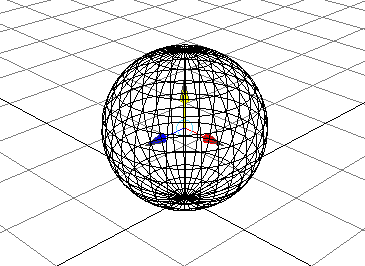
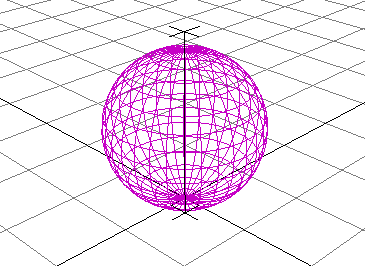

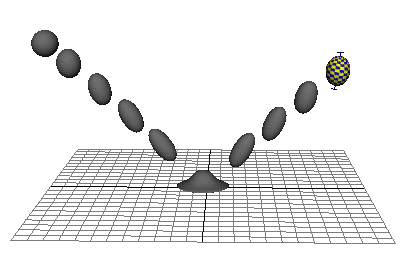
You can create squash and stretch effects with the squash deformer. This example shows how you can set up a ball for a bouncing ball animation.
To create NURBS sphere with squash control
To create deformer for stretch control
The squash1 deformer provides the squashing that occurs when the ball lands on the ground. The deformer you’ve just created (squash2) will provide the stretching that will occur when the ball is in flight.
The Channel Box now lists only the following keyable attributes for ball: Translate X, Translate Y, Translate Z, Rotate X, Rotate Y, and Rotate Z.
Now you will add two attributes to the ball for squashing and stretching.
To set driver and driven keys for stretching
 ).
).
To set driver and driven keys for squashing
Now the ball is ready for a bouncing ball animation with squash and stretch effects.
You’ve now set up the ball for animation. Try creating an animation of the ball bouncing. Include stretch effects when the ball is in flight and squash effects when the ball hits the ground. For example, your animation might look something like the following images.
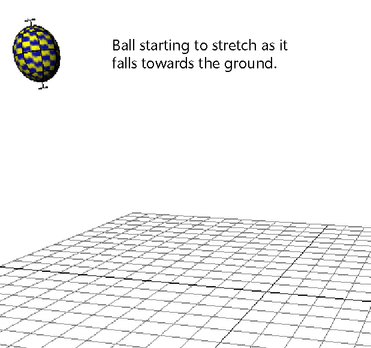

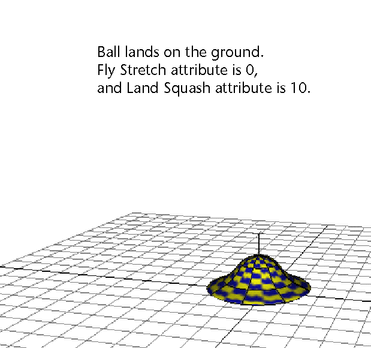
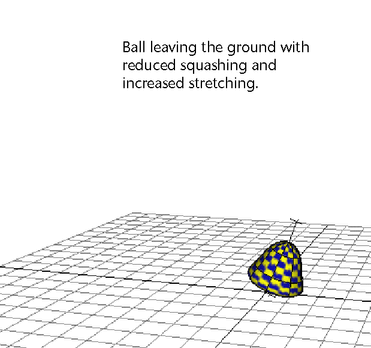

These images show just a simple example of a bouncing ball. As you develop your animation of a bouncing ball, try to see how much “character” you can give to the ball’s movements.